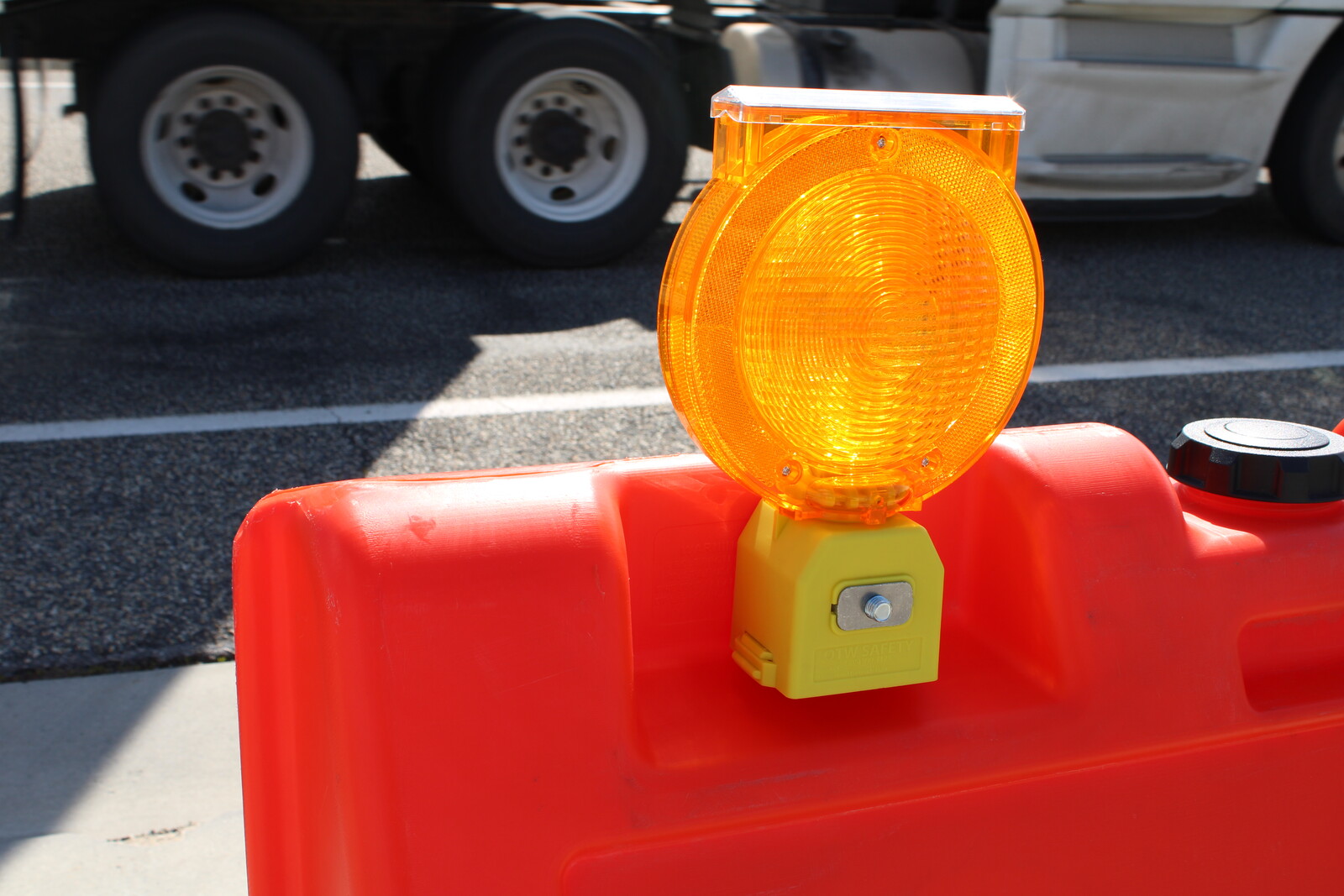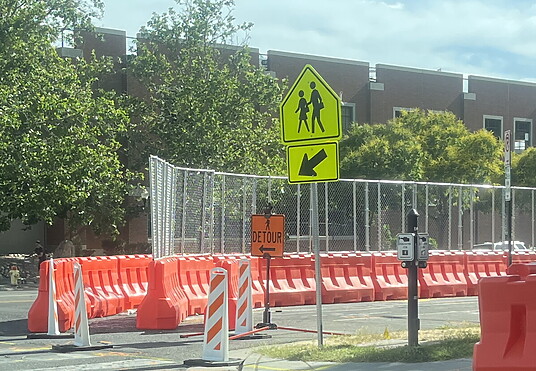Be aware for Distracted Driving Month (and beyond)

Distracted Driving Awareness Month is nearly through, but the need for awareness and intentionality while driving remains.
April is host to several month-long awareness campaigns. Among them, you’ll find Earth Month, National Stress Awareness Month, National Donate Life Month, Autism Acceptance Month, and many other important causes. One that resonates deeply with the safety industry community is Distracted Driver Awareness Month.
Distracted Driver Awareness Month has become a much-needed reminder of the dangers of driving and multitasking. While doing two or more things at once might be considered impressive at work or home, it’s anything but while on the road.
Driving distracted can be deadly. In 2023 alone, there were 3,275 people killed and an estimated additional 324,819 injured in motor vehicle traffic crashes involving distracted drivers. To put it in perspective: eight percent of fatal crashes, thirteen percent of injury crashes, and thirteen percent of all police-reported motor vehicle traffic crashes in 2023 were reported as caused or affected by distracted driving. Five percent of all drivers involved in fatal crashes were reported as distracted at the time of the incident (1). These numbers are the same or higher than previous years, indicating that this widespread epidemic isn’t decreasing as the years go by.
What is distracted driving?
According to the Centers for Disease Control and Prevention (CDC), there are three main types of distracted driving. The first is visual, which includes anything that takes your eyes off the road. You might look at a passenger beside or behind you, look down at your phone or GPS, or rubberneck while driving past an accident. The second is manual, which is using your hands for anything other than the steering wheel. This includes changing your music, using an electronic device in any capacity, eating or drinking, and more. The third is cognitive; this type of distracted driving is not as apparent as the first two, but it is still dangerous, nevertheless (2). Cognitive distractions might include daydreaming, mentally stressing about work (or anything else), or being distracted by an overload of noise (think screaming kids or loud music).
Why is this month important?
The CDC reports that nine people in the United States are killed every day in crashes that involve a distracted driver. With people traveling on the road every day, distracted driving is one of the deadliest phenomena of recent years. Highlighting the issue with Distracted Driving Month each April is an attempt to place focus on ways that will change the behavior completely. It’s tackled in various ways: public awareness, legislation, enforcement, and education are all used in an effort to decrease the number of accidents and deaths caused by distracted driving.
Do safe driving programs really work?
Cities, states, and the federal government are all working towards roads free of distractions. The Governors Highway Safety Association (GHSA) has evaluated the effectiveness of enforcing distracted driving laws in its 2024 research report, A Road Map for Safer Roads. This report discusses the benefits of safe driving programs when paired with technology to “encourage and incentivize safe driving”. Data from technological partner Cambridge Mobile Telematics (CMT), beginning in 2004, showed a decrease of nearly half of observed driver cell phone use in the communities and states (like Ohio, Michigan, Alabama, and Missouri) that have taken part in these programs from 2004 to now (3).
According to NHTSA Fatality Analysis Reporting System (FARS) data in their latest Crash Stats release, the fatality rate had been declining for nearly 30 years before progress stalled in 2016; for a few years, the numbers decreased, but after 2020, fatalities have risen exponentially and continue to do so (4). In 2022, the U.S. Department of Transportation launched the National Roadway Safety Strategy (NRSS), another step forward in its mission to “ensure America has the safest transportation system in the world”. Risky behavior is a leading factor in roadway fatalities; while intoxicated driving and speeding top the list for problematic human behavior, distracted driving ranks nearly as high. The NRSS not only aims to reduce risky behaviors that contribute to collisions and accidents but also seeks to curtail the number of transportation-related deaths in the United States entirely.
National Work Zone Awareness Week
April is also host to the National Work Zone Awareness Week (NWZAW), “an annual spring campaign held at the start of construction season to encourage safe driving through highway work zones”. This week often highlights the dangers of driving distracted through areas where construction is taking place, and it encourages motorists to pay attention, stay alert, and follow signage while navigating roadside work zones.
According to the Center for Construction: Research and Training, struck-by incidents are the second leading cause of death for construction workers. A struck-by injury occurs when a person is struck by a vehicle, object, or equipment. While many do happen directly onsite because of heavy equipment, external motor vehicles do contribute to the overall number of incidents. As a driver, your best practice in preventing struck-by incidents is following these tips: slow down, avoid distractions, and stay focused while on the road.
The North Carolina DOT will host this year’s NWZAW from April 21-25, 2025, and we encourage you to participate however you can! The key message this year is “respect the zone so we all get home”, a necessary reminder to remain aware and alert in work zones so that motorists and construction workers alike make it home every day.
What is OTW Safety doing to help?
OTW Safety is dedicated to safety on and off the road, and we are proud to partner with businesses and organizations that pursue it diligently. Our mission at OTW Safety is to enhance and strengthen public safety by providing the most innovative safety equipment on the market. Our values as a company reflect that; in particular, our drive for continual innovation helps us embrace progress and help cultivate safer environments for all. As a leader in the safety industry, we use our platform for change to represent all stakeholders and champion safety initiatives (such as the NRSS and NWZAW).
Follow us on our socials as we highlight safety initiatives and share information to help keep our roads safe.
Here’s to a safer tomorrow and an end to the need for a Distracted Driver Awareness Month!
-
Traffic Safety Facts Research Note: Distracted Driving 2023. (n.d.). https://crashstats.nhtsa.dot.gov/Api/Public/ViewPublication/813703
-
Centers for Disease Control and Prevention. (n.d.). Distracted driving. Centers for Disease Control and Prevention. https://www.cdc.gov/distracted-driving/about/index.html
-
Cambridge Mobile Telematics. (2024). A roadmap for safer roads. Governors Highway Safety Association. https://m.cmtelematics.com/hubfs/A Road Map for Safer Roads.pdf
-
Early Estimate of Motor Vehicle Traffic Fatalities in 2024. (2025, April). https://crashstats.nhtsa.dot.gov/Api/Public/ViewPublication/813710


